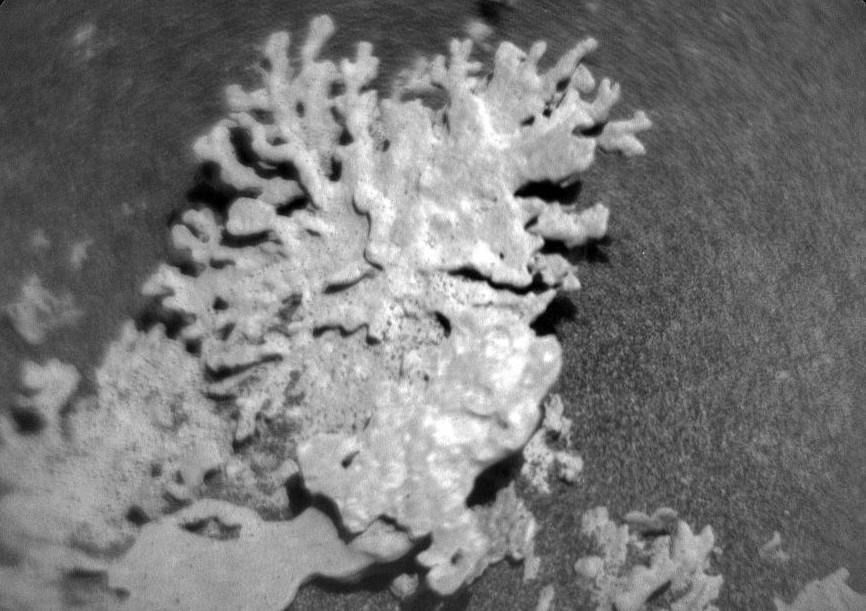
Coral-shaped rock spotted on Mars, NASA shares pic
In a fascinating discovery, NASA’s Curiosity Mars rover has sent back black and white images of a rock on the Martian surface that bears an uncanny resemblance to a piece of coral. The rock was found in the Gale Crater, a large impact basin on Mars, and is estimated to be around a billion years old.
The image, which was captured by the rover’s ChemCam instrument, has sent the scientific community abuzz with excitement. While the rock’s coral-like shape is certainly striking, it’s not the only unusual feature about this particular Martian rock. According to NASA, the rock is made up of a type of mineral called olivine, which is common on Earth but relatively rare on Mars.
The discovery of this coral-shaped rock is just the latest in a long string of fascinating finds made by the Curiosity Mars rover since it landed on the Martian surface in 2012. The rover has been exploring the Gale Crater for years, searching for signs of water and life on the Red Planet.
The coral-shaped rock is just one of many unusual features that the Curiosity rover has discovered in the Gale Crater. The rover has found evidence of ancient lakes and rivers, as well as minerals that are similar to those found on Earth. While it’s not yet clear whether the rock is actually a remnant of a coral reef, scientists are excited to learn more about it.
“Coral-like rocks are rare on Mars, and this one is particularly interesting because of its shape and composition,” said Dr. Ashwin Vasavada, the Curiosity rover’s project scientist. “We’re excited to learn more about this rock and what it can tell us about the history of Mars.”
The Curiosity rover is equipped with a variety of instruments that allow it to study the Martian surface in great detail. One of its most powerful tools is the ChemCam instrument, which is capable of analyzing the chemical composition of rocks and soil. The instrument uses a high-powered laser to break down the rock’s surface, and then analyzes the resulting plasma to determine the rock’s composition.
By studying the coral-shaped rock and other rocks in the Gale Crater, scientists hope to learn more about the history of Mars and whether the planet was ever capable of supporting life. The discovery of water and other signs of life on Mars has sparked renewed interest in the possibility of life on the Red Planet, and scientists are eager to learn more about the planet’s past and present.
The Curiosity rover is expected to continue exploring the Gale Crater for several more years, and scientists are excited to see what other discoveries the rover will make. With its powerful instruments and advanced technology, the Curiosity rover is an important tool for scientists studying the Martian surface.
Source: https://www.jpl.nasa.gov/images/pia26634-curiositys-chemcam-views-a-rock-shaped-like-coral/






